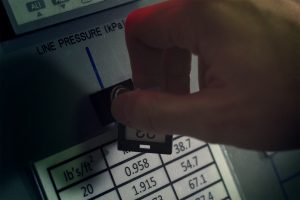Exploring the Cutting-Edge of Autonomous Driving Technologies
In the last decade, the automotive industry has experienced a major shift with the increasing development of autonomous driving technologies. From fully self-driving cars to advanced driver-assistance systems, the drive towards fully automated vehicles has been the focus of major automakers around the world. This innovation has not only been limited to traditional car manufacturers, but tech companies like Google and Tesla have also heavily invested in developing cutting-edge autonomous driving technologies.
The Rise of Autonomous Driving Technologies
Autonomous driving technologies have come a long way in a short period of time. What started as a concept for reducing human errors and improving driver safety has now evolved into a full-fledged industry with huge potential. The advancements in sensors, processors, and software have enabled cars to make complex decisions and navigate through different road conditions without any human intervention.
Levels of Autonomous Driving
The Society of Automotive Engineers (SAE) has defined six levels of autonomy for self-driving cars, ranging from no automation to full automation. These levels are categorized based on the amount of control that a driver has over the vehicle. At Level 0, there is no automation and the driver has complete control over the vehicle. As we move up the scale, at Level 5, the car is fully automated and doesn’t require any human intervention for driving.
Current Cutting-Edge Technologies
The current state-of-the-art autonomous driving technologies involve a combination of various systems, including cameras, radars, lidars, and ultrasonic sensors, to gather information about the vehicle’s surroundings. This data is then processed by advanced computer algorithms to make intelligent decisions and control the vehicle’s movements, such as accelerating, braking, and steering.
One of the key components of autonomous driving technologies is lidar, which stands for Light Detection and Ranging. This technology uses lasers to create a 3D map of the vehicle’s surroundings, providing a more accurate and detailed view compared to other sensors. Tesla’s CEO Elon Musk has been vocal about his belief that lidar is not necessary for fully autonomous vehicles, and his company has been able to achieve remarkable results without using it.
Challenges and Future Developments
Despite the rapid advancements in autonomous driving technologies, there are still some major challenges that need to be addressed before fully automated vehicles become a reality. One of the biggest concerns is the safety of these vehicles, as accidents involving self-driving cars have raised questions about their reliability.
Another challenge is the legal and regulatory framework surrounding autonomous driving. As these technologies are relatively new, there are no established laws or regulations in place to govern them. This has led to a patchwork of different rules and regulations across different states and countries, making it difficult for companies to test and deploy their self-driving cars.
However, the future of autonomous driving technologies looks promising. With ongoing research and development, we can expect to see more advanced systems that are even better at handling complex driving scenarios. There are also efforts being made to establish a unified regulatory framework to make it easier for companies to test and deploy self-driving vehicles.
Conclusion
The rapid development of autonomous driving technologies has the potential to revolutionize the automotive industry and change the way we commute. While there are still some challenges to overcome, the progress made so far is exceptional. With more research and development in this field, we can look forward to safer and more efficient transportation in the near future.
In conclusion, exploring the cutting-edge of autonomous driving technologies is an exciting journey, and we are just scratching the surface of what is possible. As technology continues to advance, we can expect to see more innovation and progress in this field, bringing us closer to a world where self-driving cars are the new norm.











